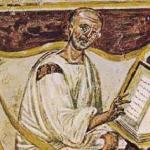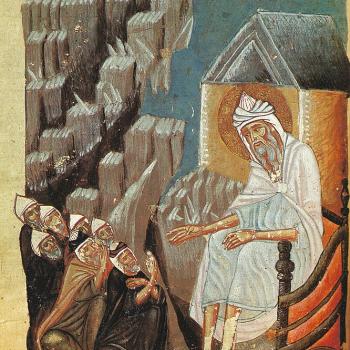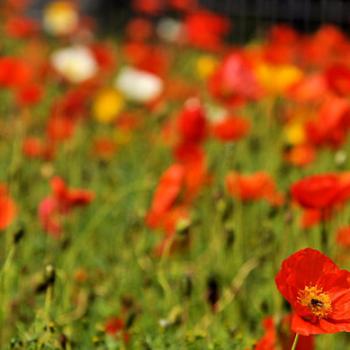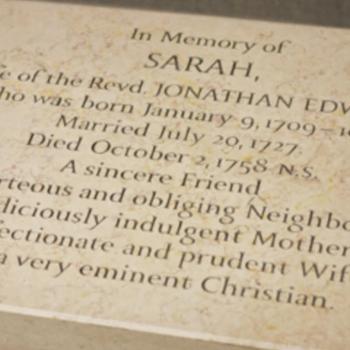 I recently had the privilege of pre-reading Rob Moll’s forthcoming book, What Your Body Knows About God (November 2014, IVP). In it, Moll distills difficult scientific research, making sense of it in light of historic Christian practices–particularly those targeting personal transformation. Moll’s own ministry experience and anecdotal accounts season the chapters, adding personal interest to this smoothly-written work. Few authors can bring scientific studies, personal interviews, and theological analysis together with the ease. Moll does.
I recently had the privilege of pre-reading Rob Moll’s forthcoming book, What Your Body Knows About God (November 2014, IVP). In it, Moll distills difficult scientific research, making sense of it in light of historic Christian practices–particularly those targeting personal transformation. Moll’s own ministry experience and anecdotal accounts season the chapters, adding personal interest to this smoothly-written work. Few authors can bring scientific studies, personal interviews, and theological analysis together with the ease. Moll does.
Moll’s interest in the topic emerged as he researched his first book, The Art of Dying, a book I have written about on The Anxious Bench in the past. Perplexed by the near dualism expressed by many American evangelicals, he set out to figure out how the body affects our religious lives as human beings. His findings and the conclusions he draws from them ought to be of interest to anyone who ministers to people and hopes for their transformation into the image of Christ (2 Corinthians 3:18)
In anticipation of Moll’s second book, I have reposted a portion of that article here. I hope that it will spur interest in Moll’s new book (which is quite reasonably priced; thanks IVP!), but more importantly, the topics that he addresses.
 In his book, The Art of Dying: Living Fully into the Life to Come (IVP, 2010), Moll urges American Christians to re-familiarize themselves with death that we may revive the ars moriendi – the art of dying. Grounded in his own experience as a hospice care worker, Moll carries two interwoven burdens throughout The Art of Dying. First, he desires each Christian’s death might once again become “an embodiment of a belief in God who has defeated death and will give life to our own mortal bodies (68).” Second, he urges congregations to once again take seriously cradle-to-the-grave ministry. Moll rightly assesses that the first cannot be accomplished without the second. Along the way, he gently rebukes contemporary evangelicalism’s propensity to follow the larger cultural trend of outsourcing end-of-life decisions to professionals. Wonderfully adept at their vocations, doctors, nurses, and other medical caretakers naturally think in terms of prolonging life, not dying well in light of the resurrection. Such is the purview of ministers, and ministers should reclaim such functions.
In his book, The Art of Dying: Living Fully into the Life to Come (IVP, 2010), Moll urges American Christians to re-familiarize themselves with death that we may revive the ars moriendi – the art of dying. Grounded in his own experience as a hospice care worker, Moll carries two interwoven burdens throughout The Art of Dying. First, he desires each Christian’s death might once again become “an embodiment of a belief in God who has defeated death and will give life to our own mortal bodies (68).” Second, he urges congregations to once again take seriously cradle-to-the-grave ministry. Moll rightly assesses that the first cannot be accomplished without the second. Along the way, he gently rebukes contemporary evangelicalism’s propensity to follow the larger cultural trend of outsourcing end-of-life decisions to professionals. Wonderfully adept at their vocations, doctors, nurses, and other medical caretakers naturally think in terms of prolonging life, not dying well in light of the resurrection. Such is the purview of ministers, and ministers should reclaim such functions.
Moll’s exhortation comes at a propitious time. As the baby boomer generation ages, a surge in elderly congregants will provide a tremendous opportunity to American churches. In an age and culture where many of us will face both knowledge regarding our impending death as well as options regarding how to live the final days of our lives, the opportunity for ministry to the dying and by the dying increases exponentially. Moll exalts both, urging congregations to continue to allow critically ill patients to employ their gifts in service to the body while the body comes alongside those who are critically ill in order to minister to them. This provides “an opportunity for the dying and elderly to continue to fulfill the ministry to which God has called them, but the rest of congregation sees life lived and ended with hope and faithfulness (169).” And a life ended with hope and faithfulness proclaims the resurrection in ways a sermon or liturgical service never can. As a result, every pastor and seminary student in America should read The Art of Dying, mulling over it carefully.
*This post is a foll0w-up to my prior post, “Outsourcing Death and Dying in America“












